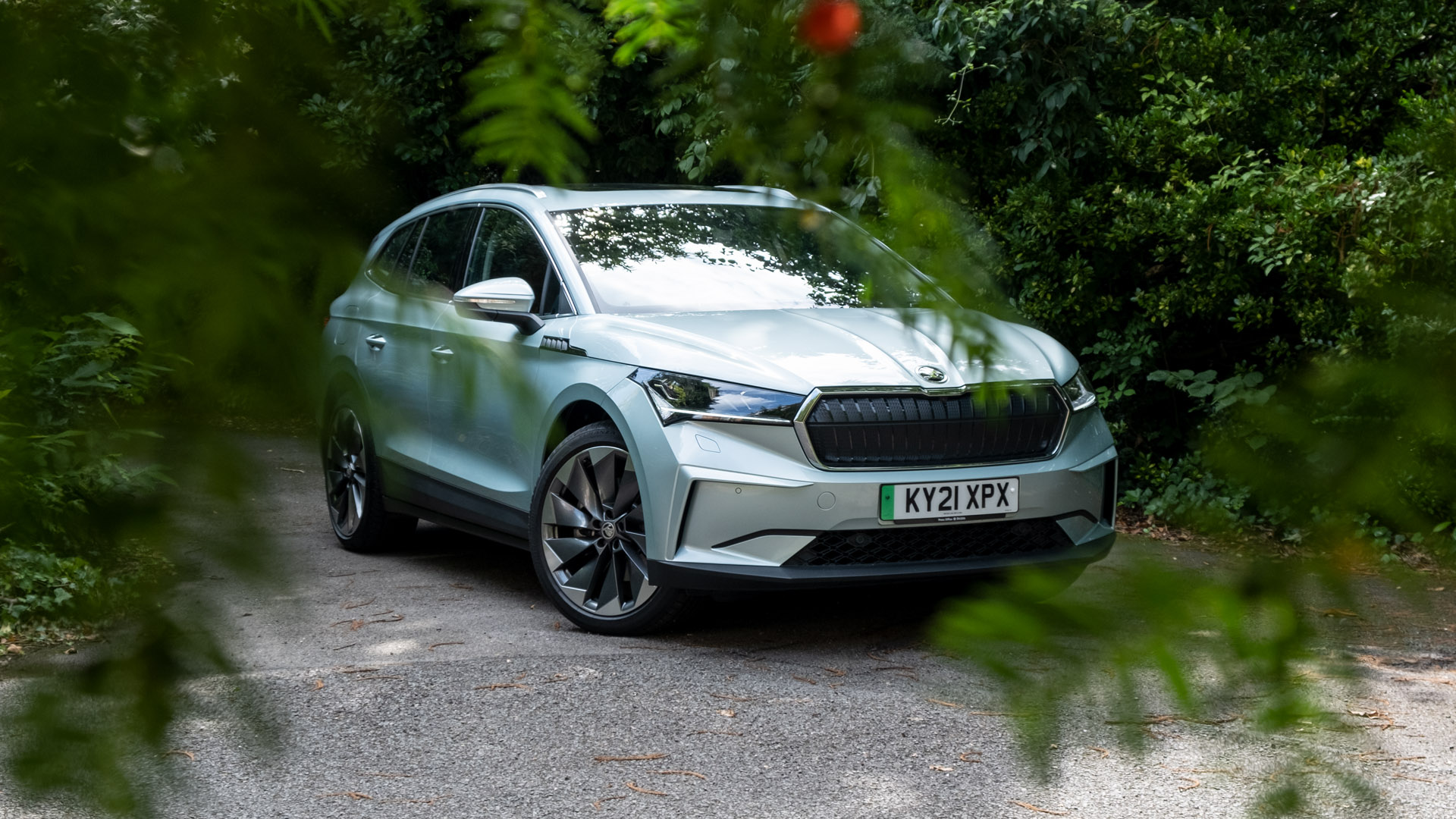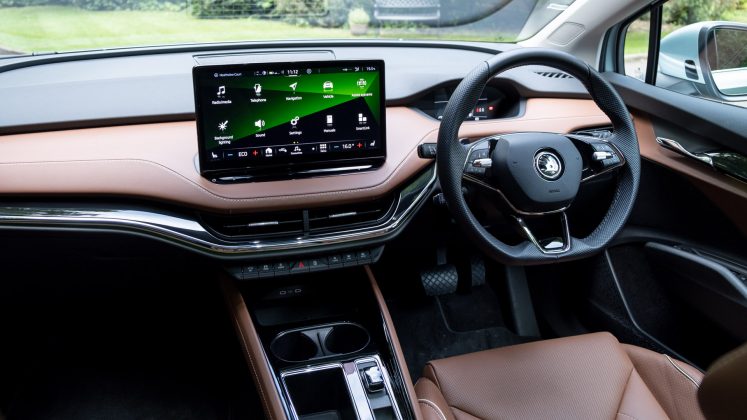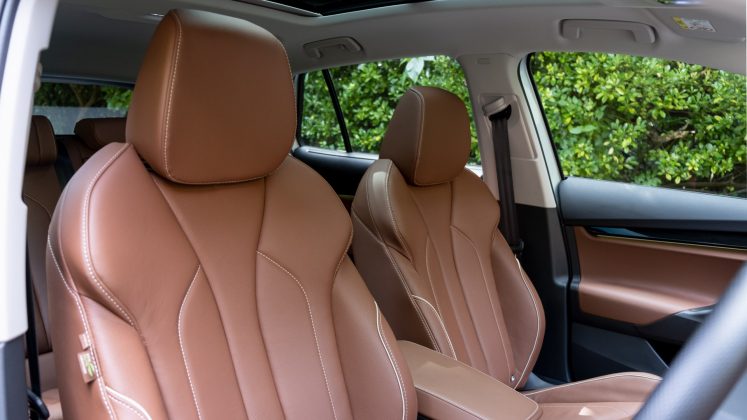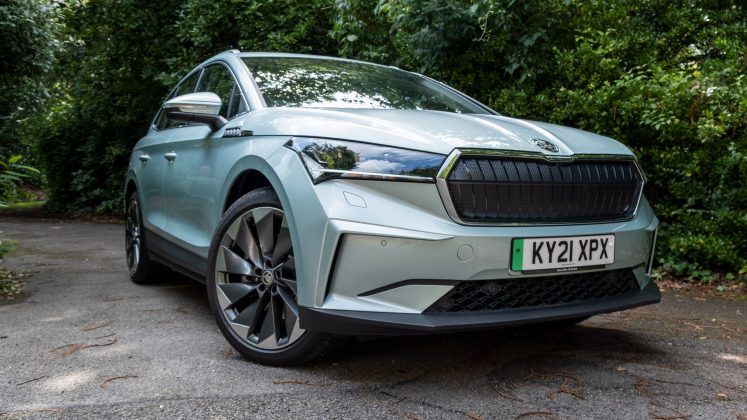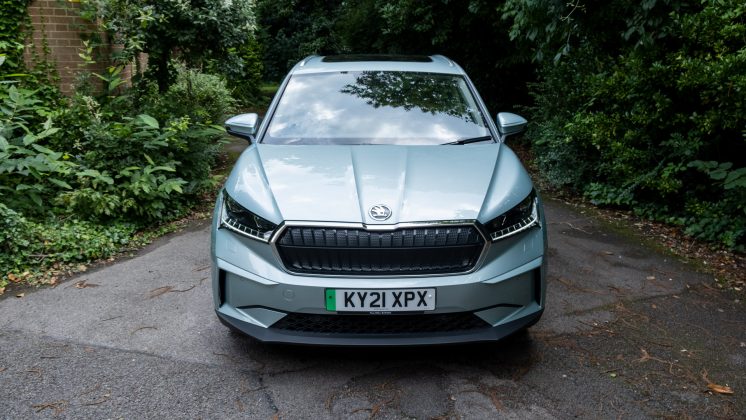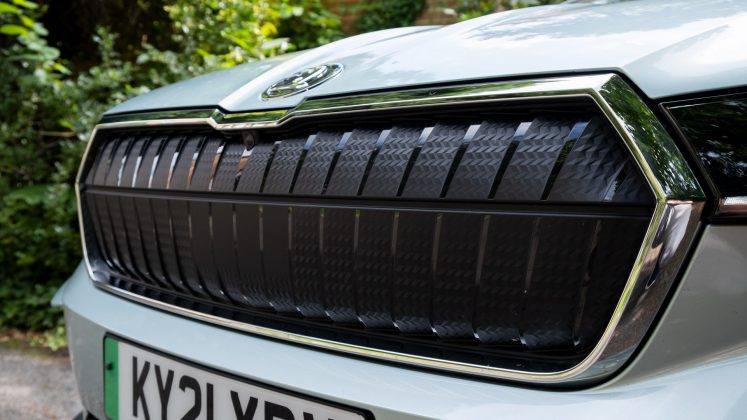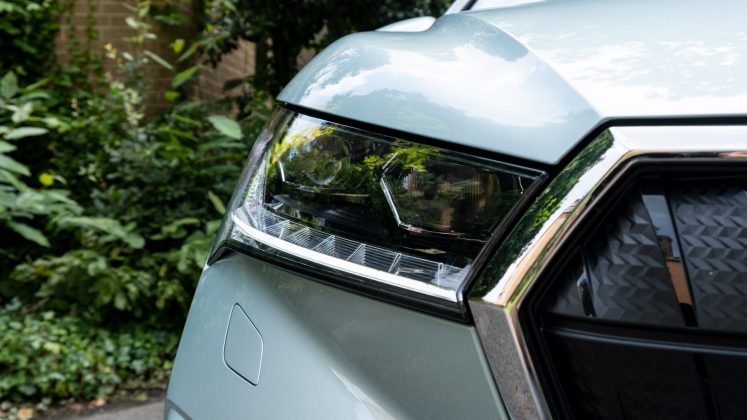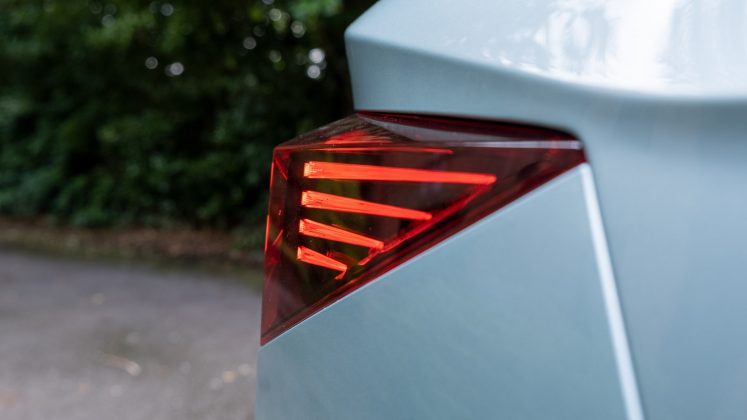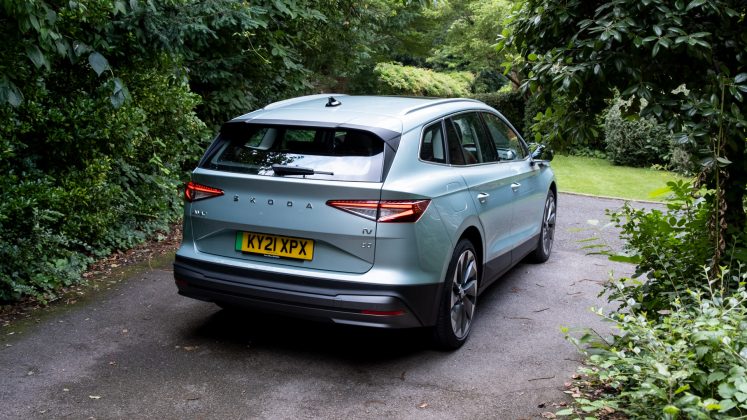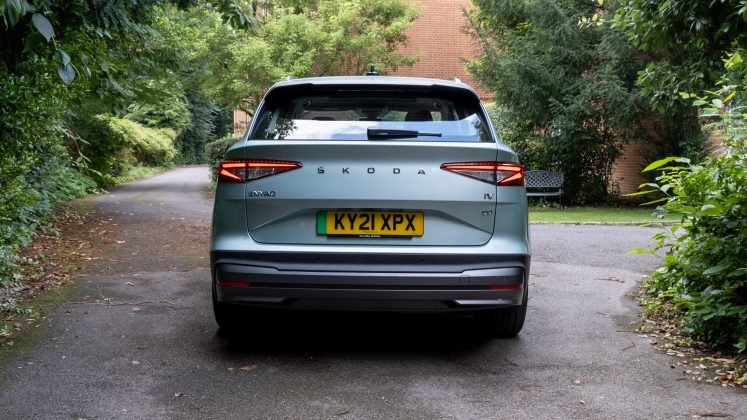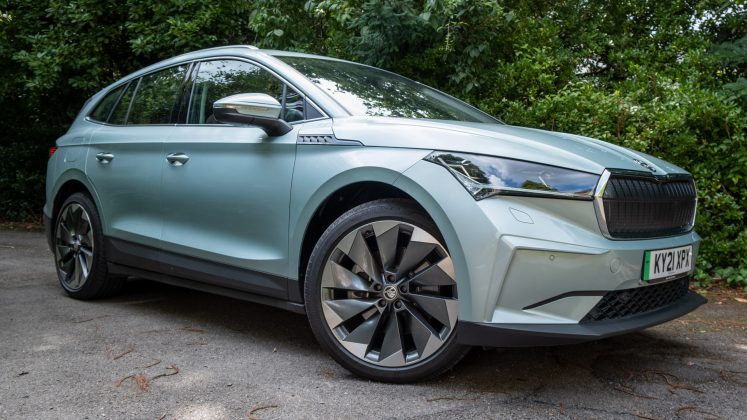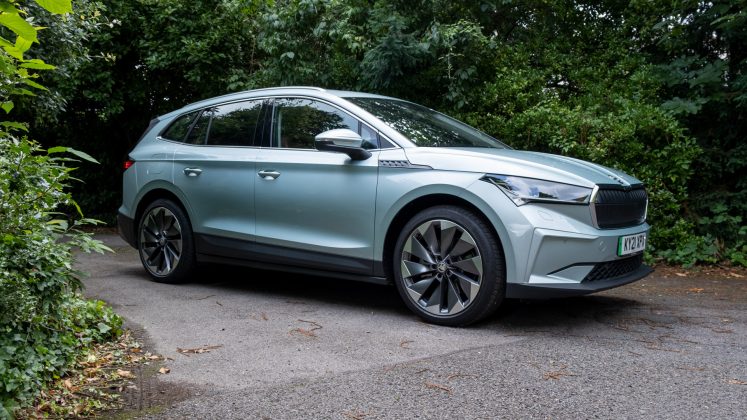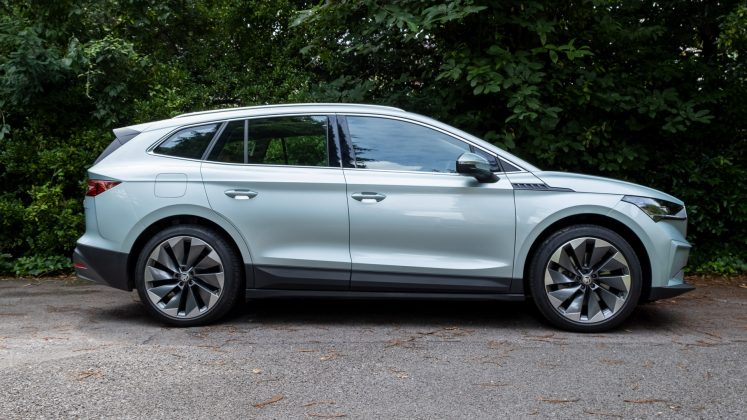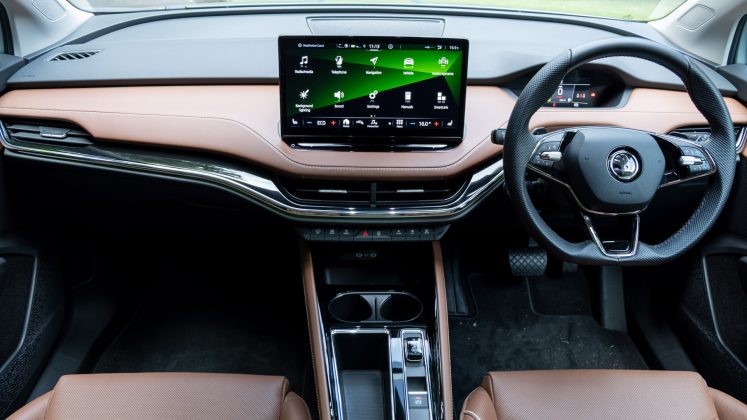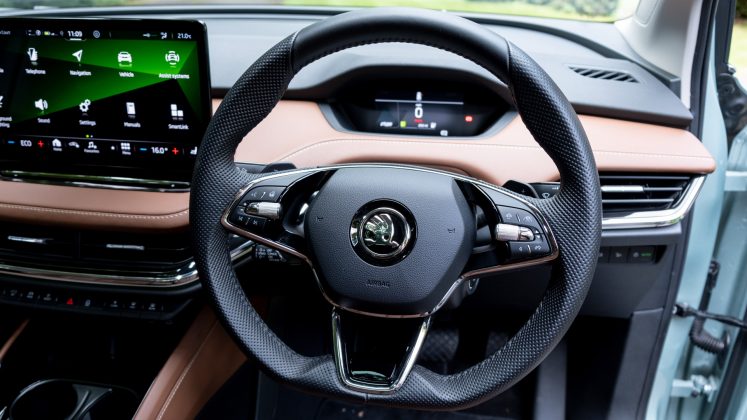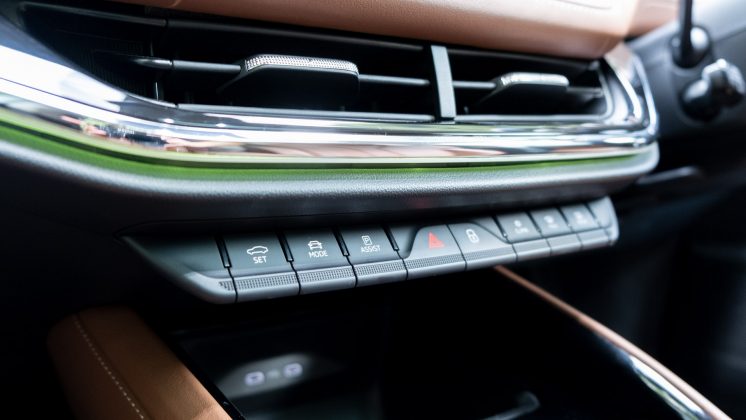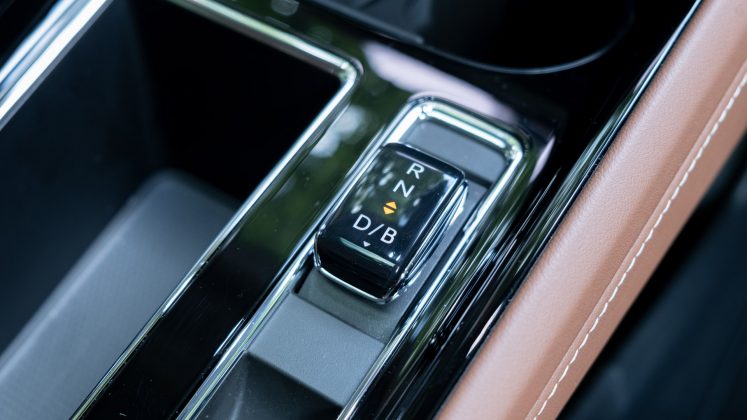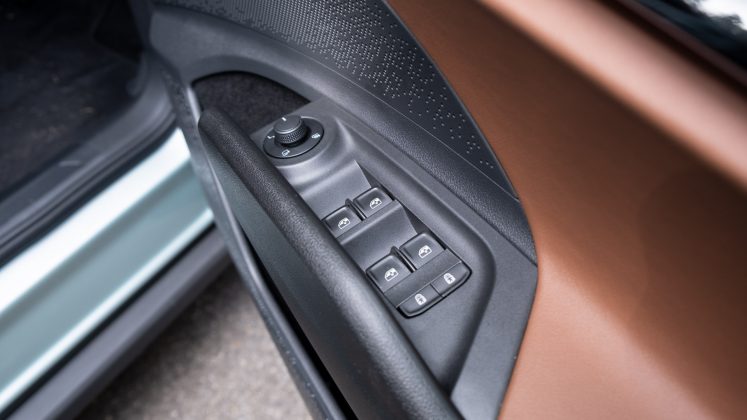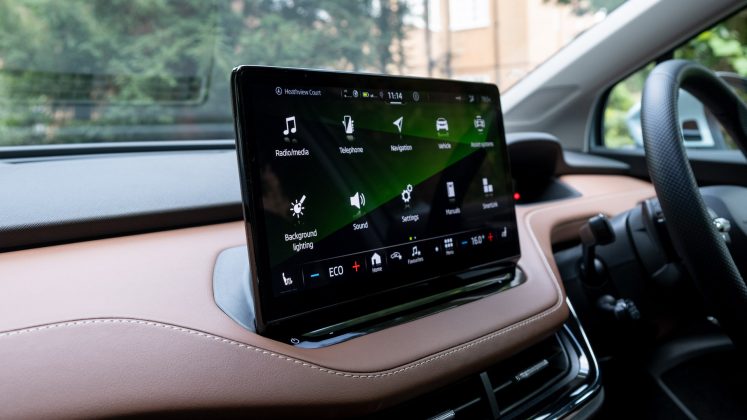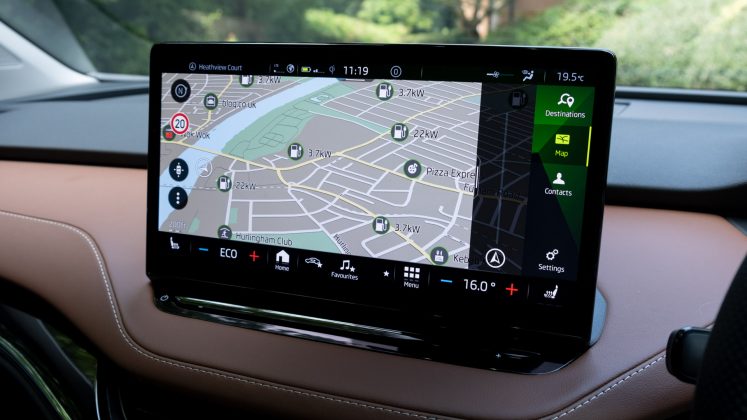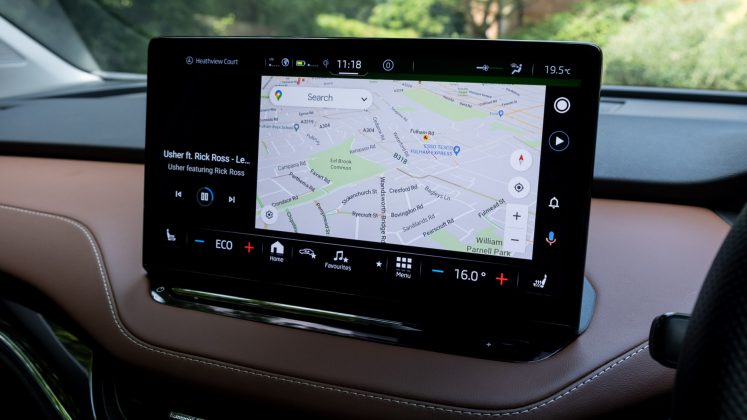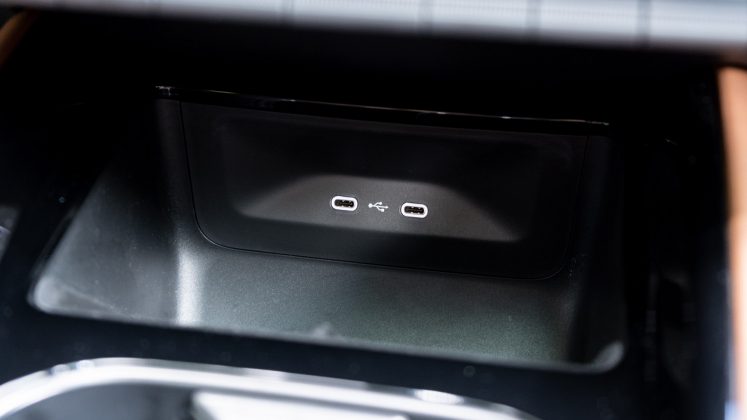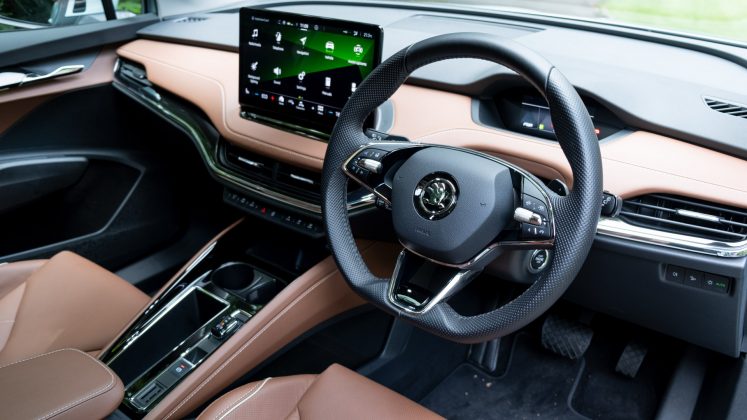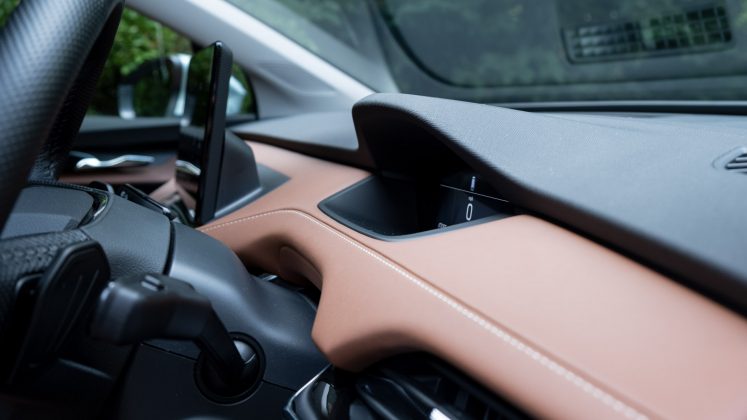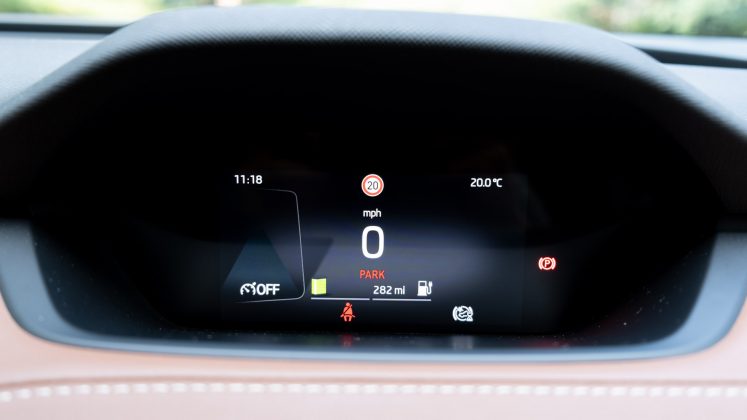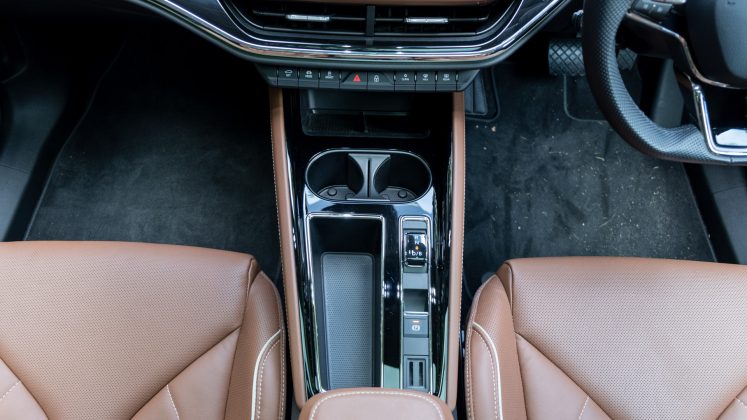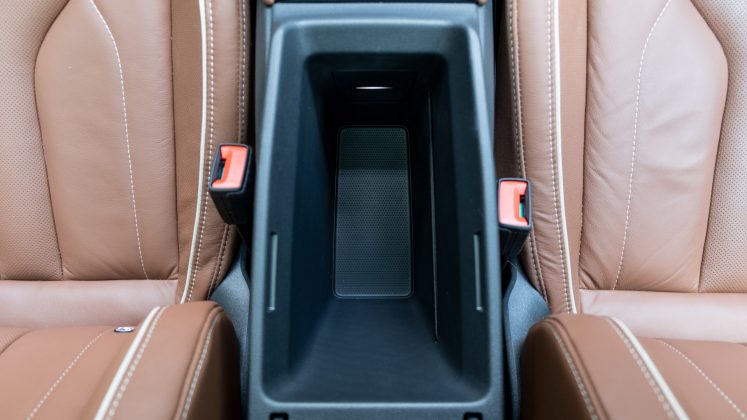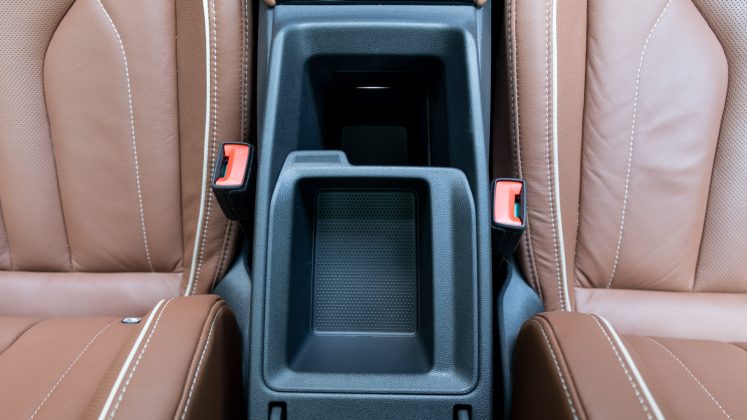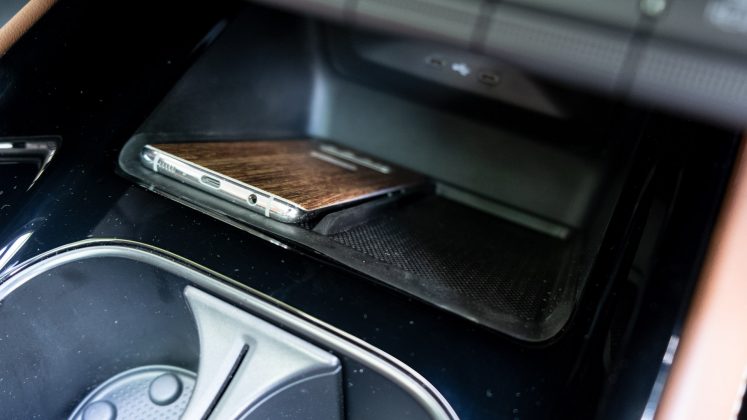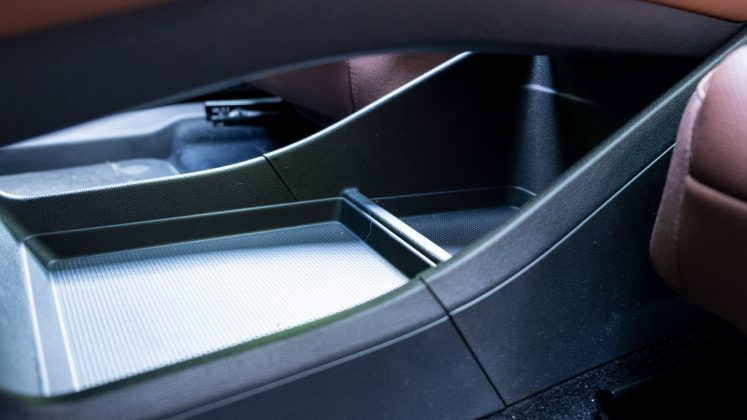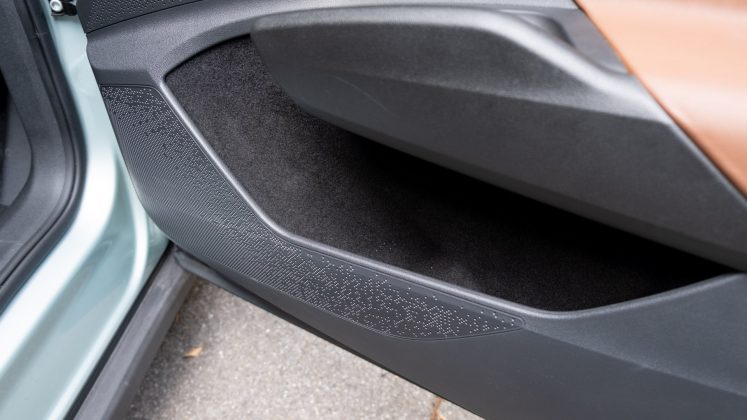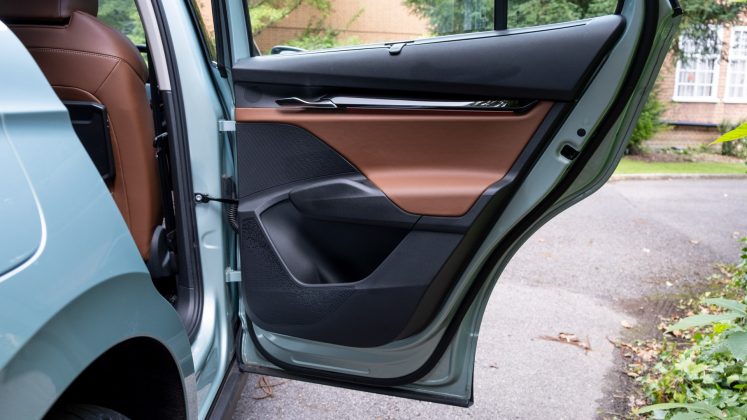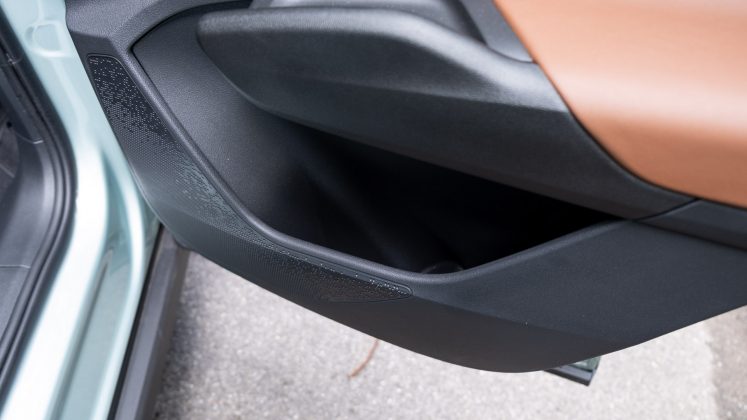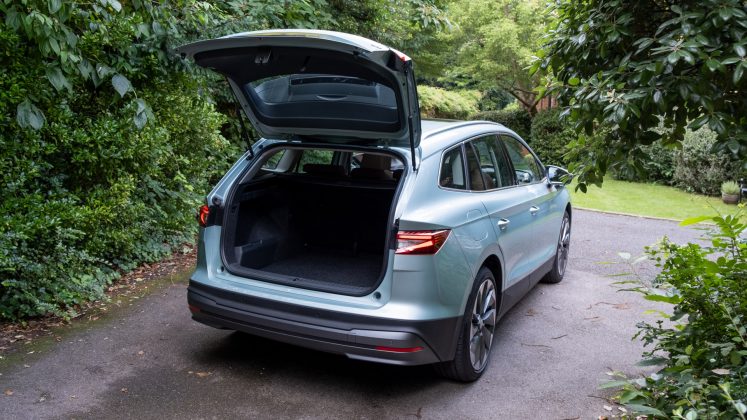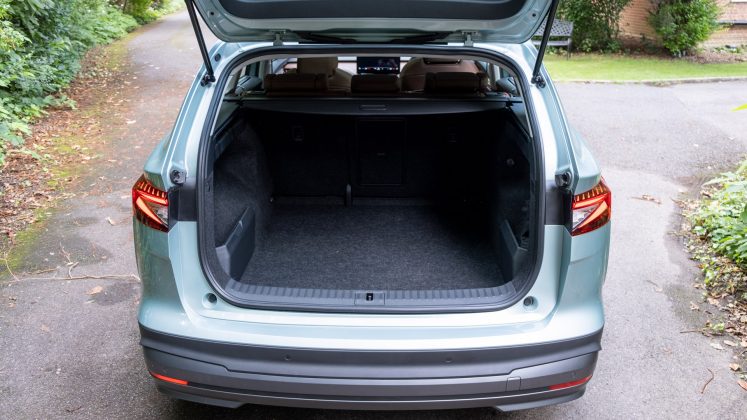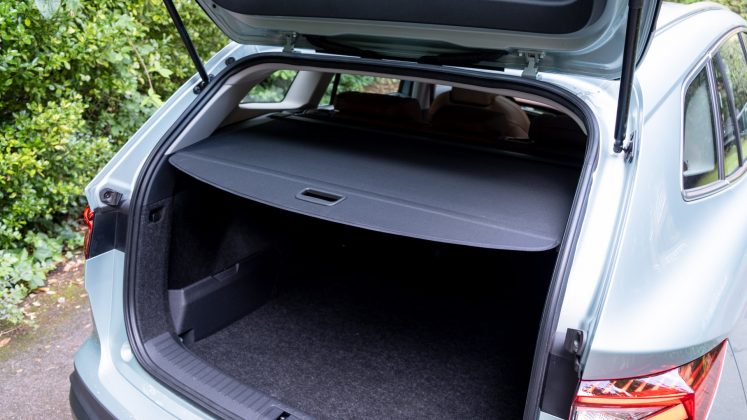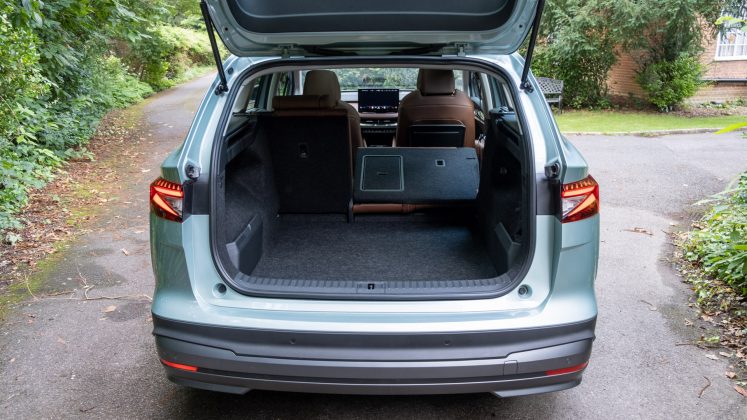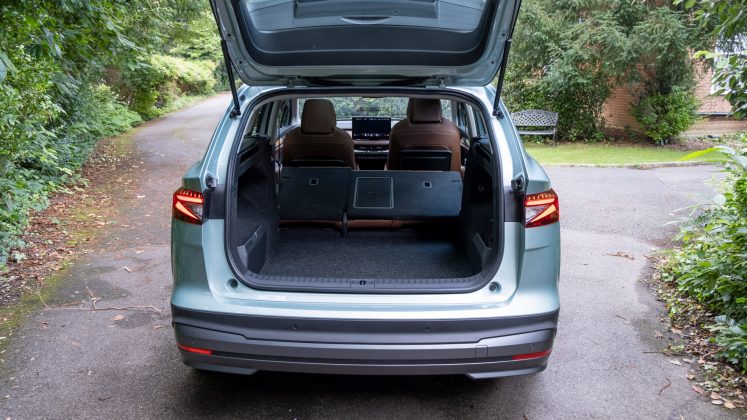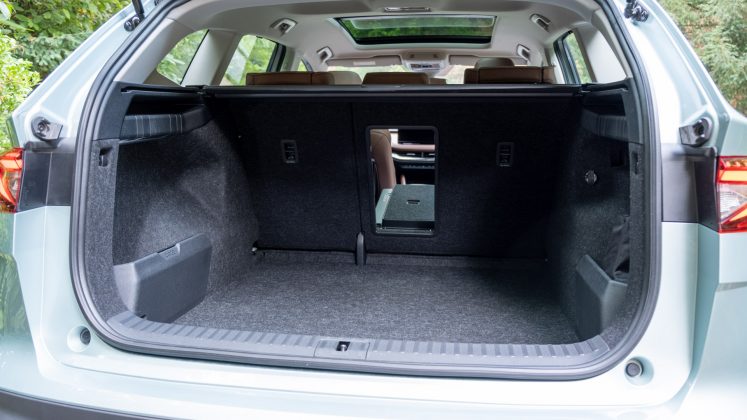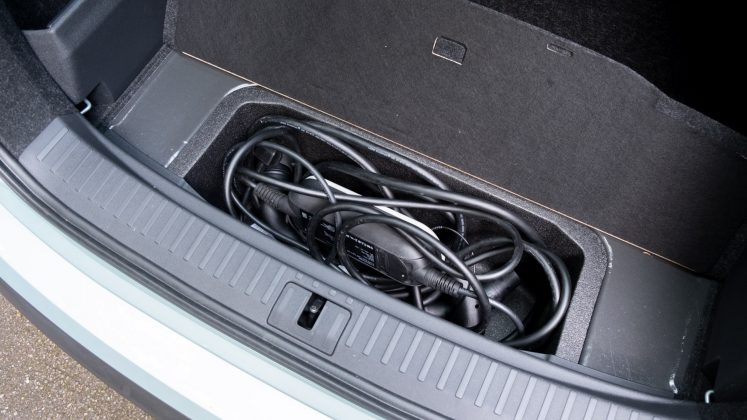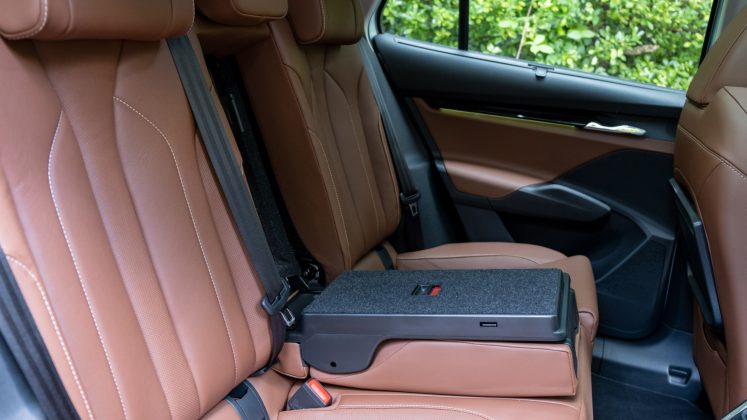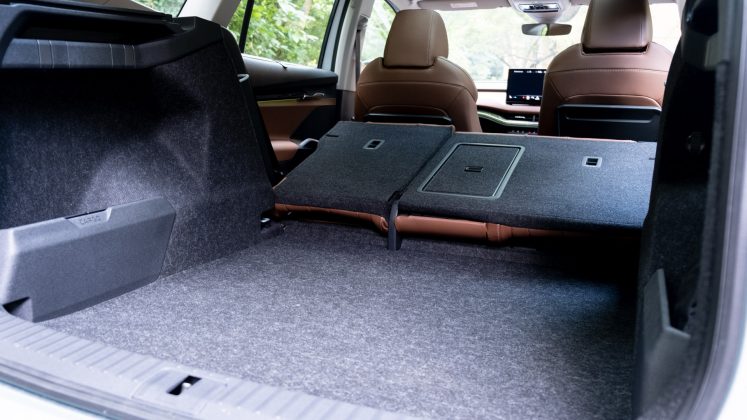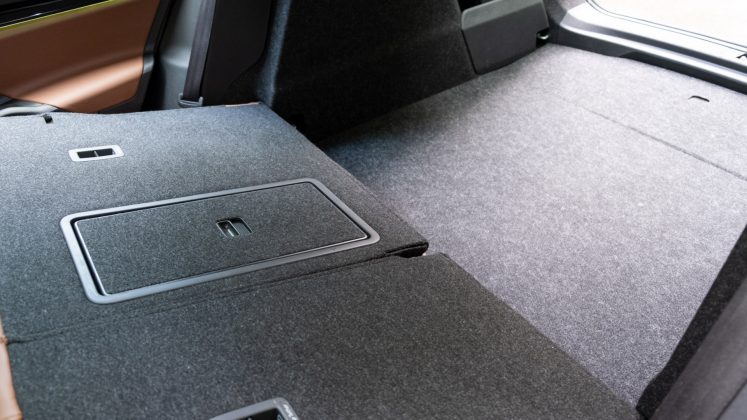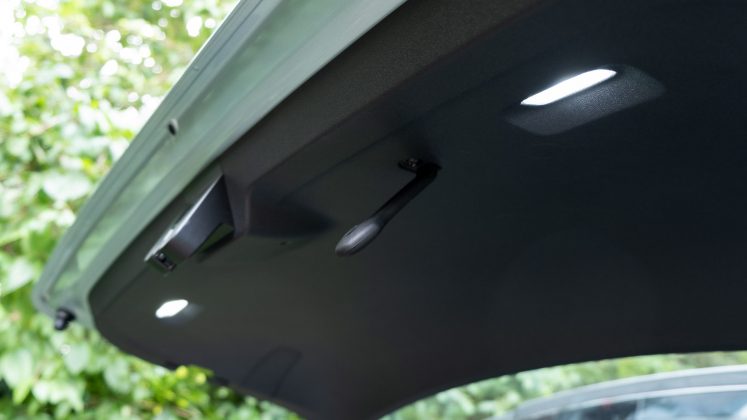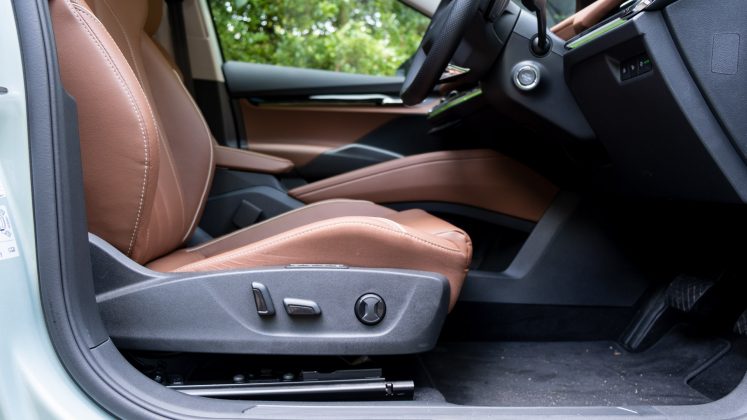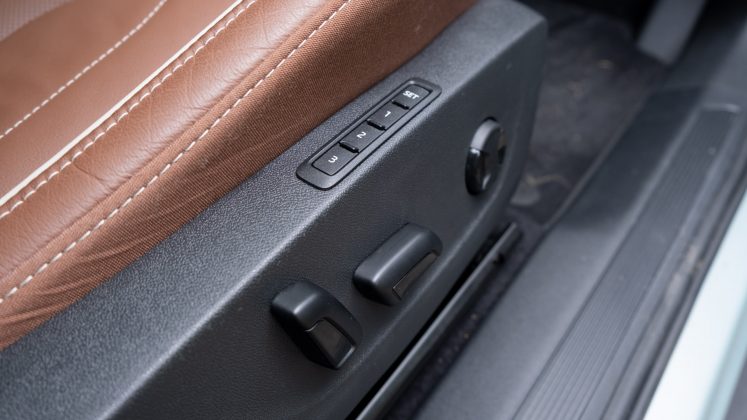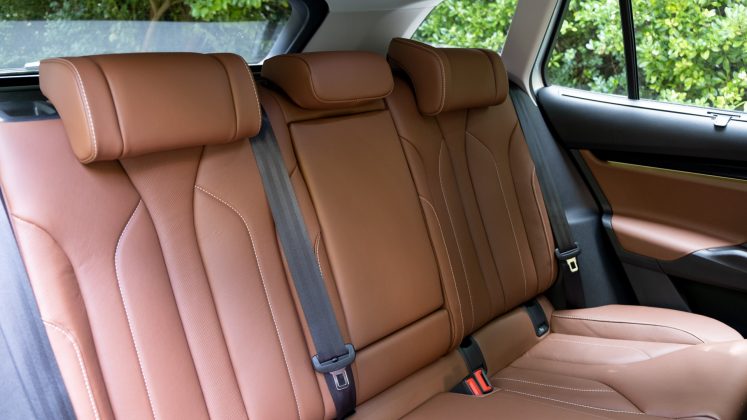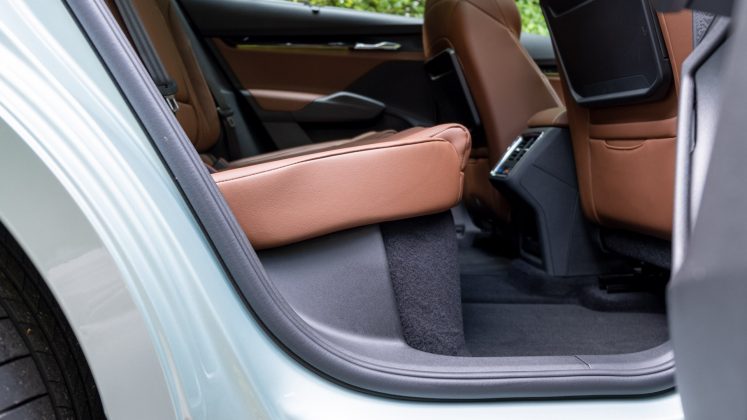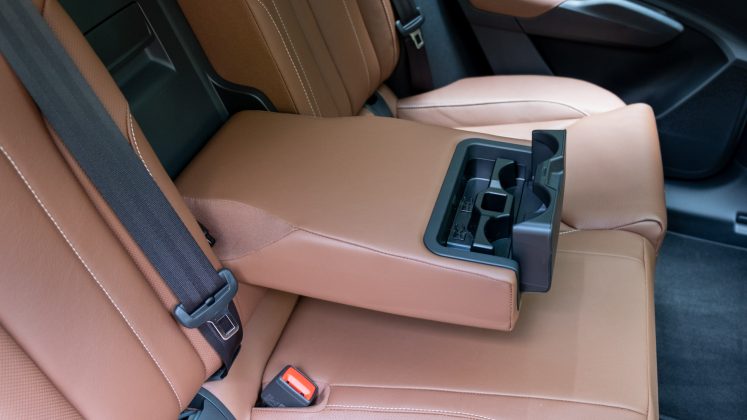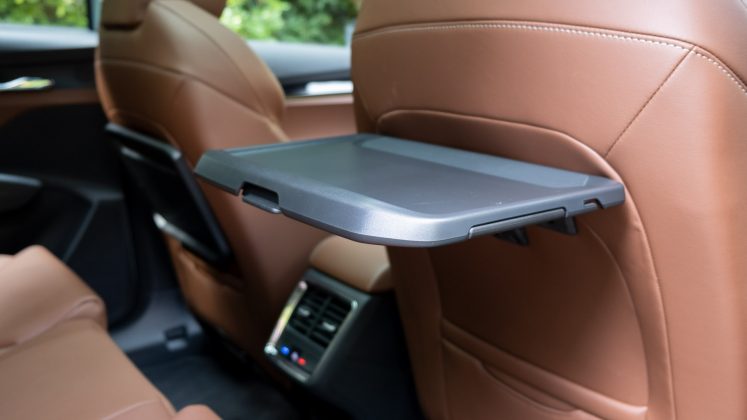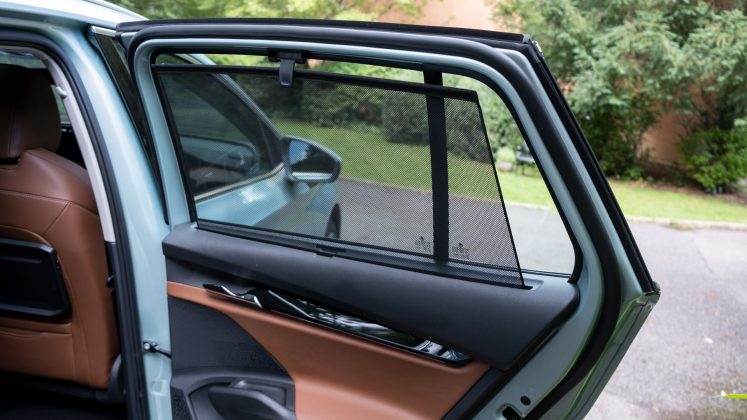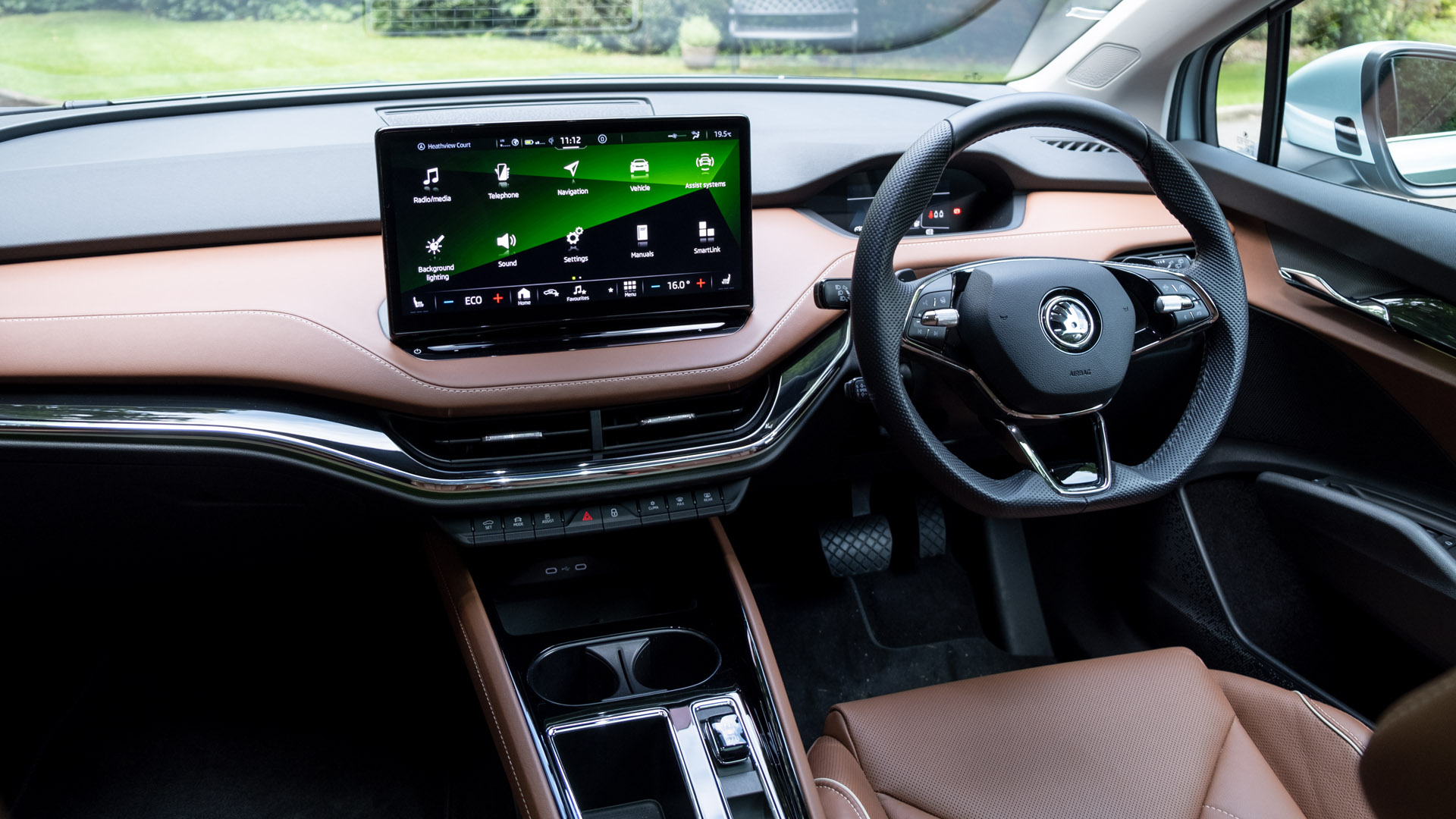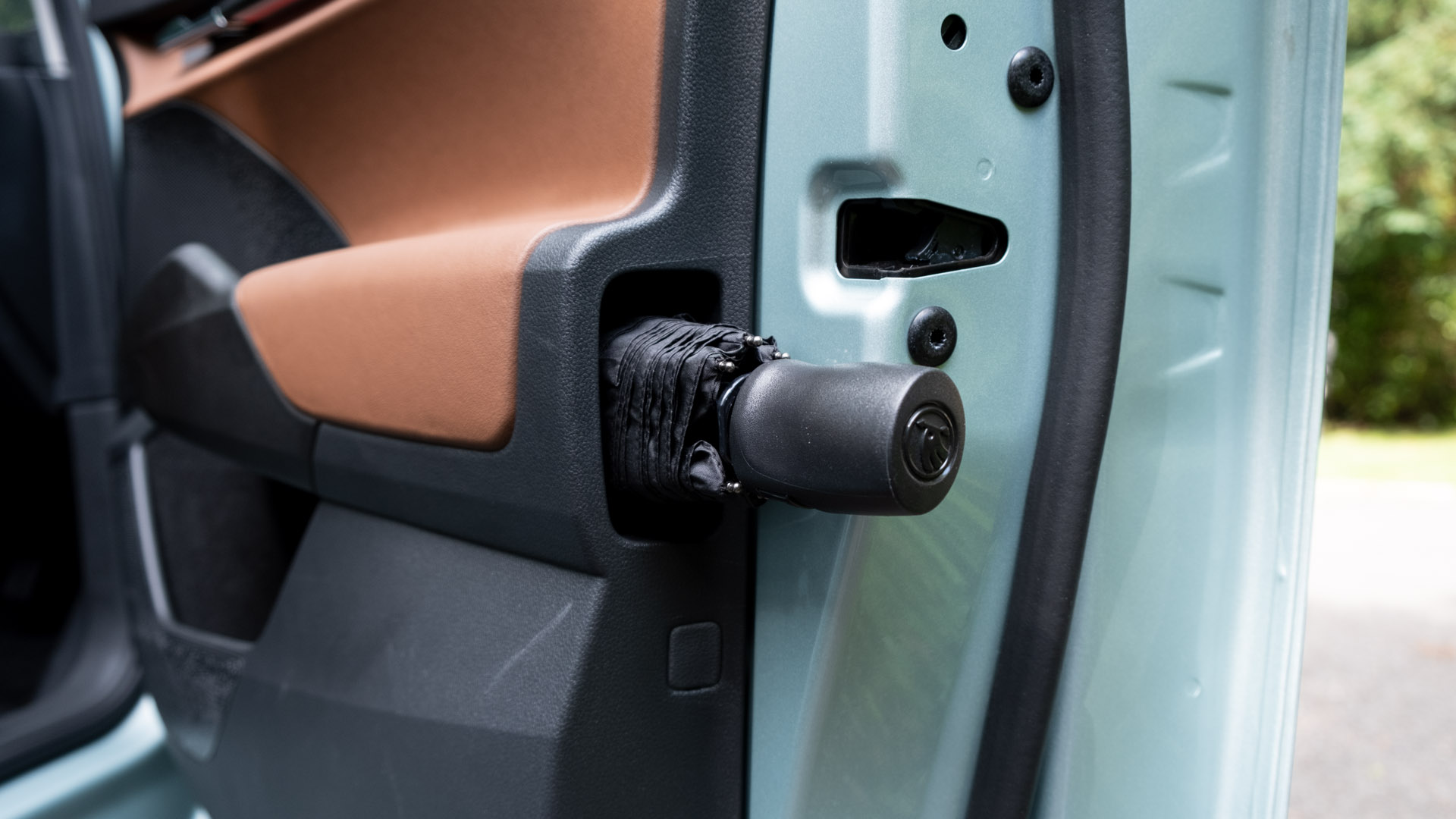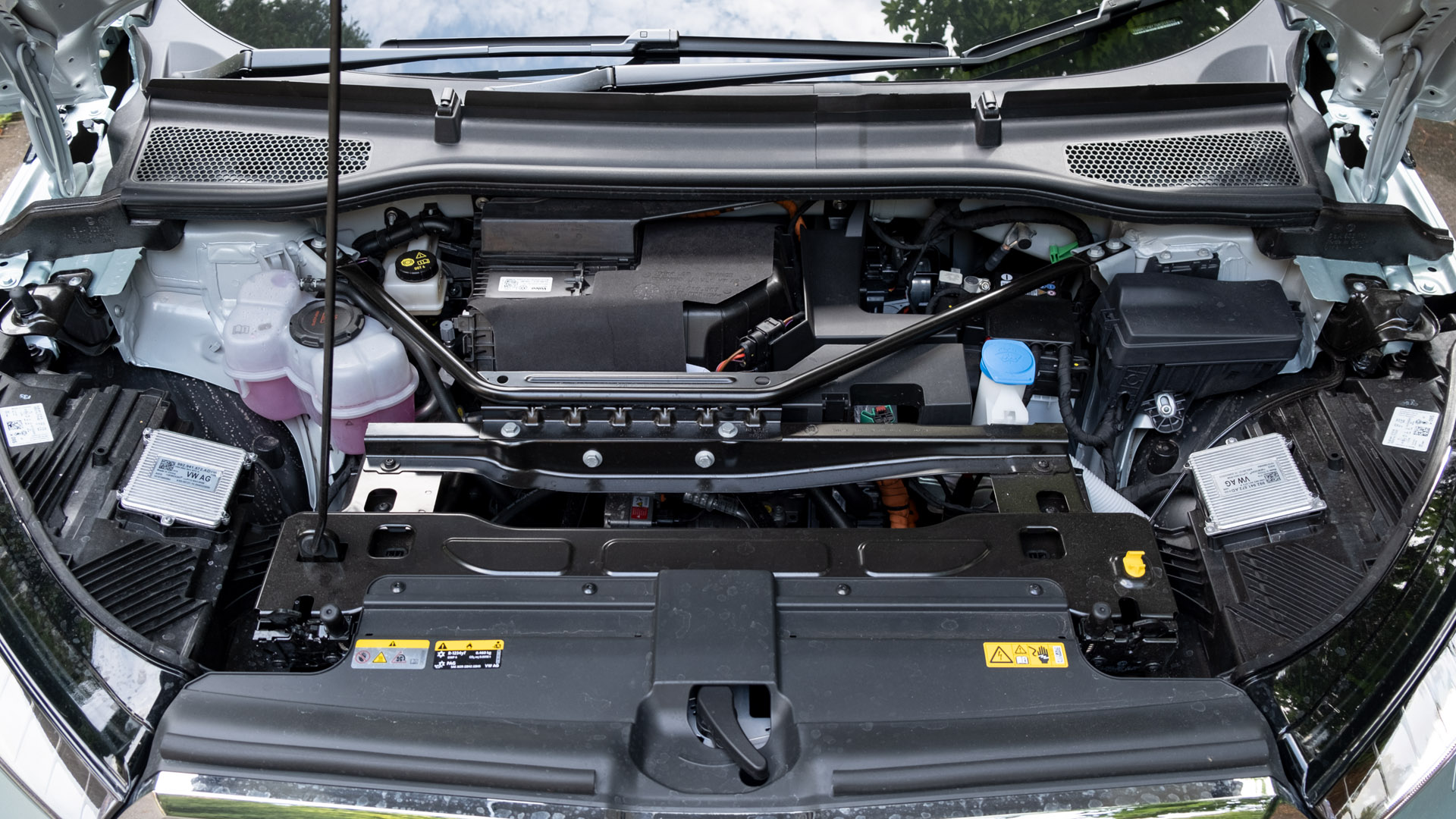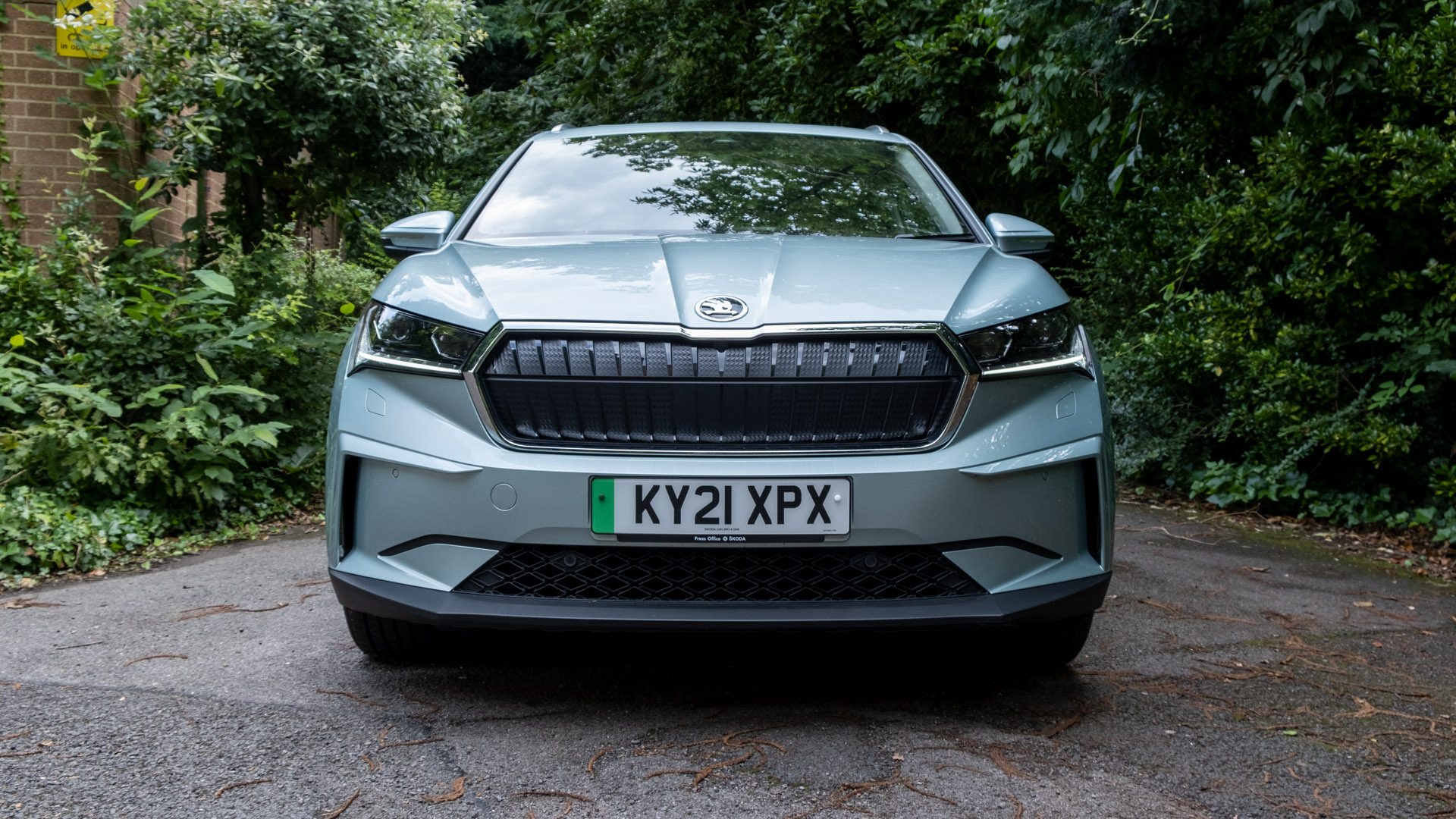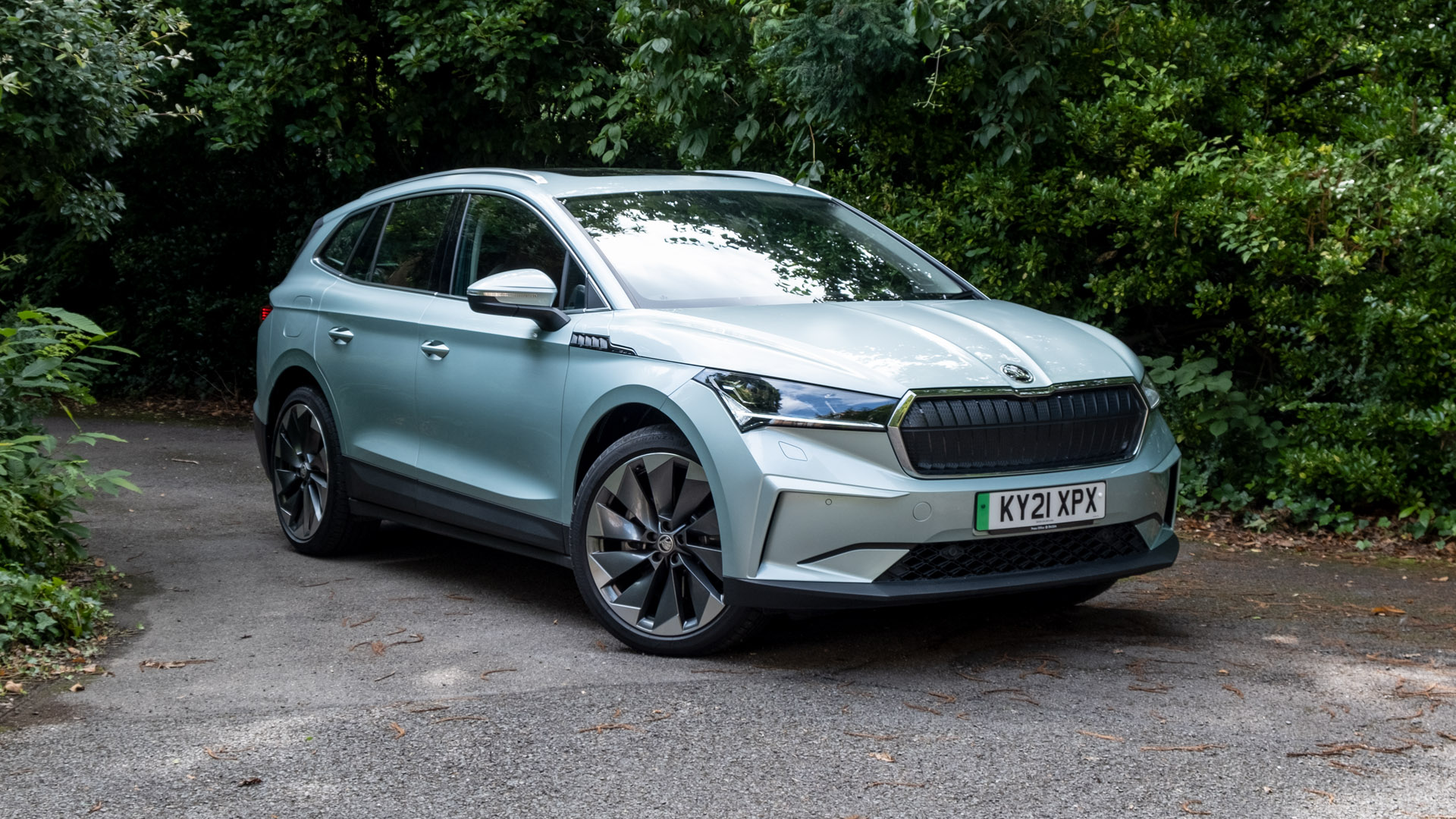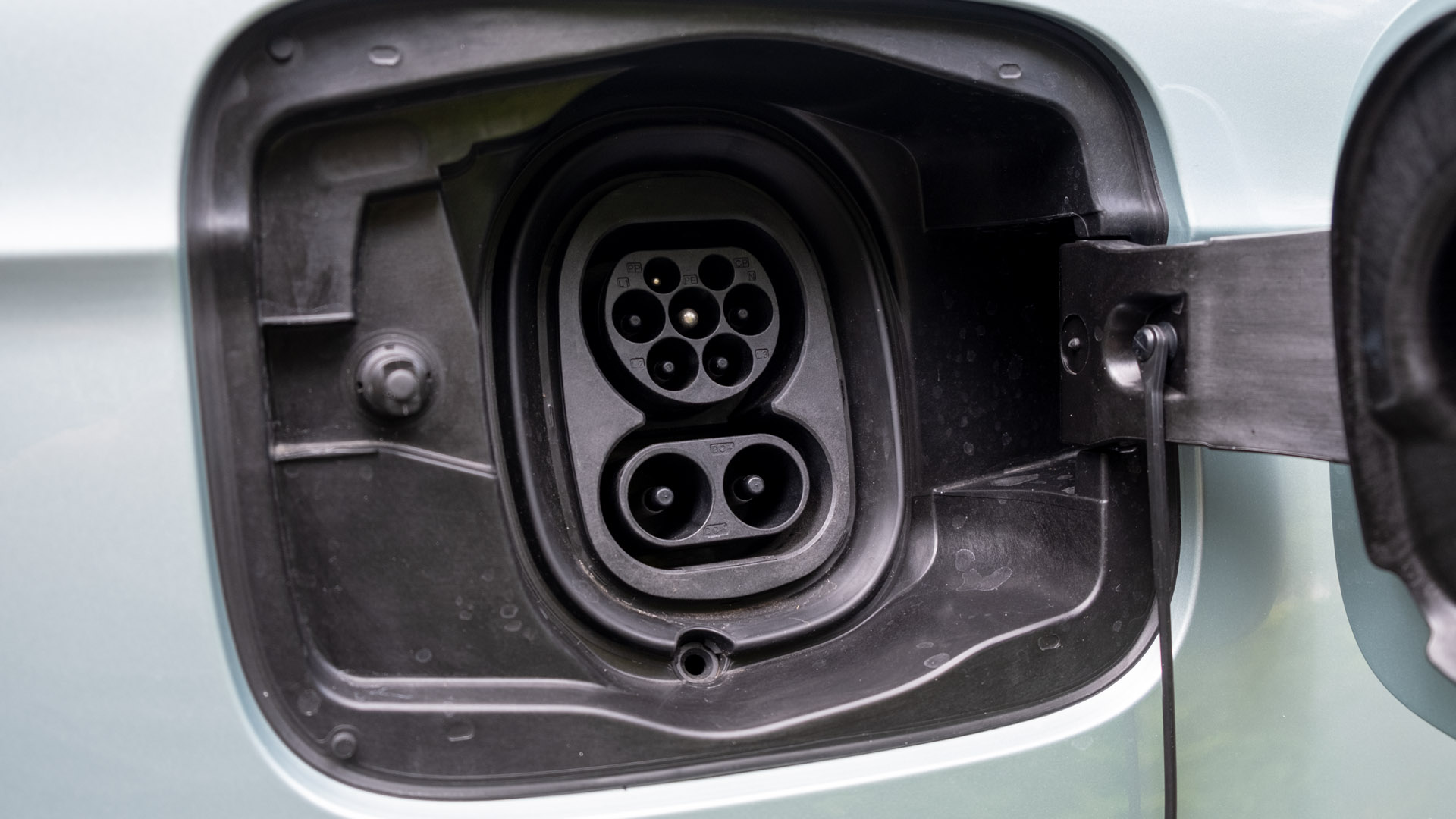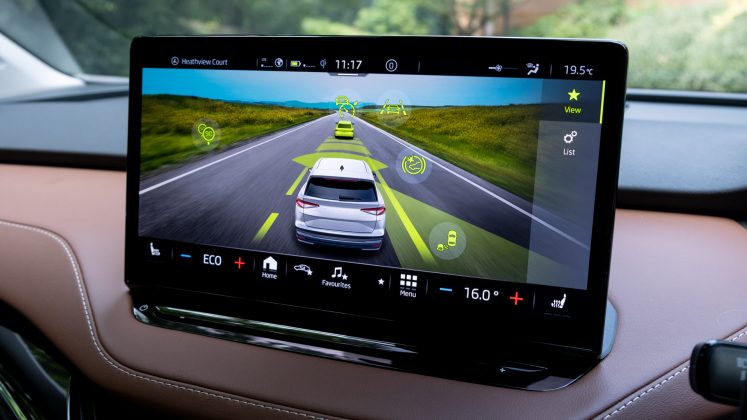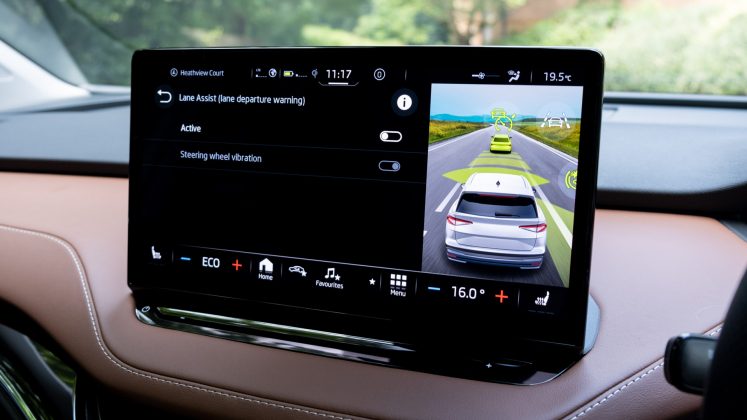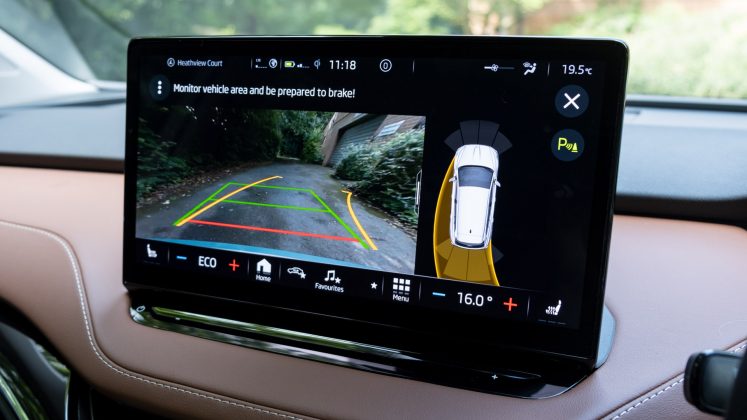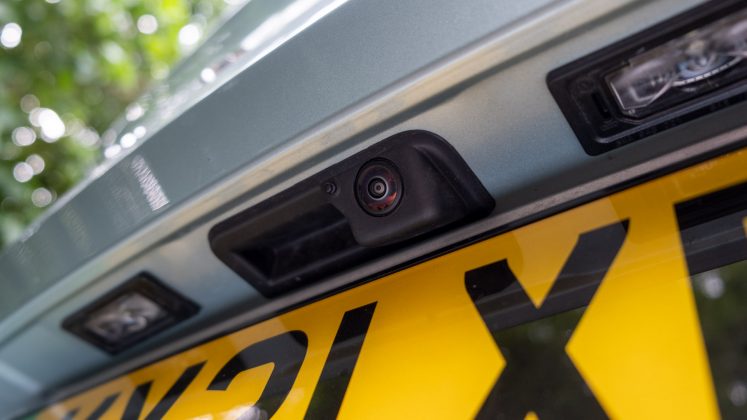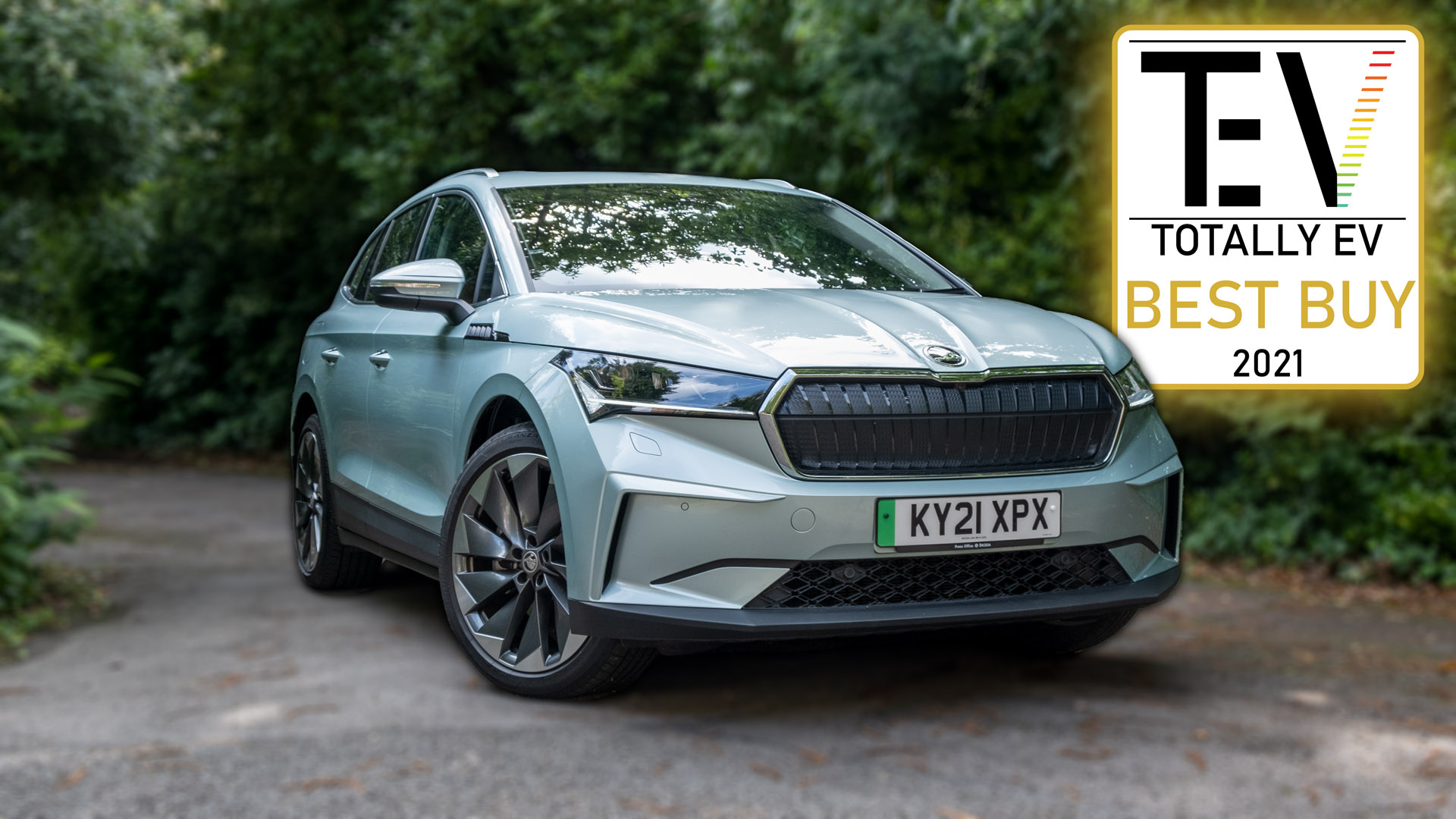In March 2019, Skoda unveiled the Vision iV concept, a sumptuous-looking SUV that reminded many of the Lamborghini Urus. Of course, both the automakers are part of the Volkswagen Group, but one wouldn’t have expected to mention the two brands within the same sentence.
A year later in September 2020, Skoda released the production version of its all-electric SUV – the Enyaq iV – which was over 90% identical to its conceptual 2019 sibling. This marked the first fully electric SUV for the brand but wasn’t the first in Volkwagen Group’s portfolio. Indeed, the Audi e-tron and Volkwagen ID.4 superseded the Enyaq iV, with the latter sharing many similarities with the Skoda.
If you’d prefer to watch a review of the Skoda Enyaq iV, head on over to our YouTube channel.
Skoda Enyaq iV price & competition
It all starts with the asking price of the 77 kWh (82 kWh gross) variants of the vehicles. The Enyaq iV 80 costs £39,365 for the ‘Loft’ trim and extends up to £40,935 for the ecoSuite variant, which we have on review. There’s also the iV 80 SportLine that comes in at £42,915 and the all-wheel-drive (AWD) iV 80x SportLine that starts from £46,610.
By comparison, the 77 kWh VW ID.4 Life starts from £42,020 and extends up to £50,710 for the fully-kitted out ‘Max’ trim. The AWD ID.4 GTX costs £48,525 and the GTX Max comes in at £55,555.
Find the best Skoda Enyaq iV deals
However, if one doesn’t require the range of the 77 kWh model (331 miles on the WLTP cycle), the Czech automaker offers a 58 kWh (62 kWh gross) battery pack claiming a 256 miles range on the WLTP test cycle – the iV 60 starts from £34,510, which means it qualifies for the £2,500 government’s plug-in car grant (PiCG), bringing its price down to £32,010. Likewise, Volkswagen offers the ID.4 with a 52 kWh battery pack (213 miles WLTP), and indeed this model also benefits from the PiCG and thus costs £32,495.
Buy a car phone mount on Amazon (Affiliate)
Of course, there are other all-electric vehicles out there on the market: the MG ZS EV starts from £26,095 (163 miles WLTP); the Kia Soul EV, e-Niro ‘2 64’ and the Hyundai Kona Electric Premium 64 kWh (282 miles WLTP) all come in at £32,445. There is also the Citroen e-C4 (217 miles WLTP), which starts from £30,895 and the Peugeot e-2008 from £30,730 (206 miles WLTP); the Mazda MX-30 SE-L Lux that costs £26,715 (124 miles WLTP). You’ve also got the MG5 EV, an all-electric estate with a claimed range of 214 miles at £25,095 and the Long Range model (250 miles WLTP) that starts from just £26,495.
Past these, you’ve got a few premium all-electric SUVs: the Volvo XC40 Recharge Twin at £49,950 (259 miles WLTP); the Audi e-tron at £62,025 (227-271 miles WLTP); the Jaguar I-Pace at £65,245 (292 miles WLTP); the Mercedes EQC at £65,720 (255 miles WLTP); and the Tesla Model X at £98,980 (360 miles WLTP).
Read next: Volkswagen ID.4 review: Better than the VW ID.3?
Skoda Enyaq iV trim and options
As mentioned, there are a few iterations of the Enyaq iV, but both the iV 60 and iV 80 are offered in five different trim levels: Loft (£39,365), Lodge (£39,890), Lounge (£40,505), Suite (£40,675) and ecoSuite (£40,935) – in the brackets you’ll find the price of the iV 80 models. Elsewhere, there’s the iV 80 SportLine (£42,915) and iV 80X SportLine (£46,610) that aren’t customisable. At the time of writing, we don’t have pricing information on the iV RS/vRS model, but this will certainly cost substantially more than its siblings.
The differences between the five trim levels come in form of the vehicle’s interior design; all of which are stylish, but the ecoSuite certainly takes the cake. This model, on review, uses eco-friendly processes and materials; instead of using chemicals, the cognac brown leather upholstery has been ecologically tanned with the extract of olive tree leaves. Not only does it bolster the vehicle’s eco-credentials but it also looks and feels exquisite.
Aside from the different finishes, both the iV 60 and 80 models operate on a rear-wheel-drive system and have a singular rear-mounted motor. The iV 80X SportLine and the RS model, both run on an all-wheel-drive system and have two electric motors, one on each axle.
This is what it translates to: the iV 60 has 132 kW (177 hp) of power and 310 Nm of torque that’ll get it to 62mph in a claimed 8.7s; the iV 80 with 150 kW (201 hp) of power and the same torque figure will get to 62mph in 8.5s; the iV 80X SportLine has 195 kW (261 hp) of power, clocks in at 6.9s to 62mph and will deliver 425 Nm of torque. As for the top-spec RS/vRS, it has 225 kW (301 hp) of power, dispatches 460 Nm of torque and will get to 62mph in a claimed 6.2s.
As for a full list of options and standard equipment – you can find them on Skoda’s website, but to help you here’s a snapshot of the brochure (click to expand):
The iV 80 ecoSuite we have on review comes fitted with the following options: 21” Betria Anthracite Metallic Alloy Wheels, Assisted Drive Package Basic, Climate Package Basic, Comfort Seat Package Basic, Drive Sport Package Basic, Family Package Plus, Light and View Package Basic, Metallic Paint / Pearlescent, and a Panoramic Sunroof. This takes the tally up to £46,175.
Read next: Audi e-tron review: Best premium all-electric SUV?
Skoda Enyaq iV exterior review
From concept to production, Skoda’s SUV has looked impressive. Subjectively, we prefer the former, as it had a sleeker side profile, a stylish headlight design that stretched the width of the car and a very sporty-looking rear boot. Nevertheless, the production model isn’t far off its sibling and shares many similarities.
At the front of the vehicle, the SUV has a sporty, muscular stance where the bonnet has a bit of flair thanks to dividers at the centre and sides. While there’s no longer an LED strip that runs the width of the car, the headlights are supremely stylish. Using a unique crystal structure, the head- and sidelights are dazzling providing a classy look to the vehicle. A large-sized covered front grille dominates the vehicle’s frontal design, with chrome accents around it that draw’s attention toward the plastic enclosure. Elsewhere, the aggressively styled air ducts that reside on either side of the front bumper, provide the EV with a sporty stance.
As we pan around to the side of the vehicle, the Enyaq iV has a more family-orientated design. Its wheelbase, which measures 2,765mm, is near-identical to the ID.4, but its 4,649mm length makes it a touch bigger than its VW sibling that measures 4,584mm, instead. It’s also slightly wider, where the Skoda measures 2,147mm in comparison to the ID.4’s width of 2,108mm. In terms of design, it’s great to see body-coloured wheel arches – a minor complaint we had of the Kia e-Niro and Hyundai Kona Electric, which both opt for plastic inserts, instead – and stylish 19″ alloys that complete its side profile; 20″ and the pictured 21″ Betria Anthracite alloys are available as an option, too.
Around the back, the Enyaq iV has a subdued design with rounded edges, sleek-looking taillights, a plastic rear bumper and a small spoiler. It’s still very stylish and retains a familiar Skoda look.
As a small observation, the Enyaq iV still retains traditional door handles and wing mirrors. In the ID.4, the former is built into the vehicle’s four doors, resulting in a slightly sleeker side profile, whilst on the e-tron Sportback, there are aerodynamically designed cameras that replace the vehicle’s wing mirrors.
Read next: Mini Electric review: Style over substance?
Skoda Enyaq iV interior review
Moving inside the cabin, the Enyaq iV can’t quite keep up with the Audi e-tron, however, in comparison to the ID.4, Skoda does offer some competition – arguably, the Czech automaker offers a more luxurious design (namely with the ecoSuite finish) and more importantly an interior design that’s a bit more practical, too.
Indeed, there are a few more familiarities with the Enyaq iV – there are physical buttons on the steering wheel and beside the driver’s side door, physical shortcut buttons on the dashboard, and a sleek gear selector found on the centre console. By comparison, the ID.4 has touch-based buttons on the dashboard and steering wheel and opts for a gear selector on the steering column.
In a sense, the Skoda is a little easier to get used to but there are still modern twists that we feel overcomplicate basic operations. Take for example the climate controls, one has to access this through the infotainment system, and while the quick-access ‘Clima’ button found on the dashboard takes you to the right place, it still means one has to faff around with the display whilst driving. The volume controls are similarly awkward, where they are present via a capacitative touch slider located under the screen – a physical volume knob wouldn’t have gone amiss. As for the 13″ touchscreen display, it’s planted at the centre of the dashboard and isn’t angled toward the driver, which makes certain operations a little cumbersome when on the move.
Complaints aside, the technology the automaker has on offer is much appreciated. The infotainment supports both Android Auto and Apple CarPlay, with the former also integrating with the vehicle’s instrument cluster for navigation data. Two USB Type-C ports found toward the centre console provide access to the vehicle’s system. Should you want to connect wirelessly, the Skoda supports wireless Smartlink, allowing for Android Auto to operate without needing to plug in. Bluetooth is also available, where the SBC and AAC codecs are supported. As standard, the Enyaq iV houses eight audio drivers, two more than its VW sibling. If you’d like to hear how it performs, watch our detailed review on YouTube.
Keeping with the subject of technology, a 5.3″ fully digitalized display serves as the instrument cluster. It provides all the key information that you’d require and through the left/right buttons on the steering wheel, you can expand the driver assistance system or the navigation screen. Should you want to go a step further, a Head Up Display (HUD) is available as a £740 option.
Onto the steering wheel, you’ll find a flurry of buttons. Media controls on the left, instrument cluster and cruise control settings on the right. Behind the wheel, there are two flappy paddles that adjust the degree of regenerative braking – there are three levels to choose from, which we will expand further down in this review.
Read next: Kia e-Niro review: The best all-electric SUV?
Skoda Enyaq iV storage review
As for storage, the Enyaq iV offers an ample amount of space. Within the cabin, there are large front and rear door bins that’ll fit a 500ml bottle, the glove box, two cupholders within the centre console, two non-slip angular phone holders (upgradable to wireless charging pads), a cut-out for loose change or a small wallet, a large compartment under the centre console, and another large compartment within the centre armrest that provides enough room for a large-sized purse or wallet – a removable tray resides here, too.
As for the boot, there’s an enormous 585 litres available and with the seats down this figure extends up to 1,710 litres. That’s superior over most of its competitors, including the ID.4 that offers 543 and 1,575 litres, respectively. To put it into perspective, here’s how the Enyaq iV stacks up to its all-electric rivals: the Audi e-tron (660/1,725 litres); Kia e-Niro (451/1,405 litres); MG ZS EV (448/1,375 litres); Peugeot e-2008 (434/1,467 litres); Kia Soul EV (315/1,339 litres); Citroen e-C4 (380/1,250 litres); Mazda MX-30 (341/1,146 litres); Hyundai Kona Electric (332/1,114 litres). As for the MG5 EV estate, it offers 464 and 1,456 litres, respectively.
Our only complaint is that the tailgate is not electronically operated. Here, the boot has to be manually propped open, and very much like the VW ID.4, can be rather heavy to close and hard-to-reach when fully propped open for those who are shorter. Should you want an electrically operated tailgate with kick activation, you’ll need to purchase the £725 Convenience Package Basic and the £515 Convenience Package Plus packages. The two tot up to a rather spenny £1,240.
As for the boot compartment, there’s a retractable and removable load cover, underfloor storage to conveniently tuck away your charging cables, a 12V socket, and a few hooks on either side for your shopping bags.
Unfortunately, the boot floor isn’t flat, wherewith the rear seats folded down, there’s a significant step between the two surfaces. You can, however, reduce the gap by opting for the additional £305 Transport Package, which gives you a variable boot floor. Nonetheless, the seats do have a 60/40 split and a ski latch at the centre, allowing you to transport two rear occupants and elongated goods.
Read next: MG ZS EV review: An affordable all-electric SUV
Skoda Enyaq iV comfort review
Given the Enyaq iV’s size, it shouldn’t come as a surprise to learn that it offers excellent headroom and legroom, both at the front and rear of the cabin; even 6-foot 4-inches (193cm) individuals won’t feel henned in. The only thing to note is that the rear seats are slightly angled, much like the ID.4, rear occupants will find that their knees will sit a little further up than their pelvis. However, given there’s plenty of room to stretch one’s legs, this is somewhat of a non-issue.
The four main seats are all comfortable (the fifth is a little hard), with the front two being manually adjustable as standard. Should you want an electronically adjustable driver’s seat with lumbar support, you’ll need to fork out an additional £440. If it’s the front two you’re after you’ll need to spend an additional £880 on the Comfort Seat Package Plus pack. Both electronic seat options require you to select either the £685 Assisted Drive Package Basic or £915 Assisted Drive Package Plus package – that’s £1,125-£1,565 to get electronically adjustable front seats, which is rather ridiculous.
Heated seats aren’t standard either. It’s £400 to add heated front seats, and an additional £310 to add heated rear seats alongside a heated windscreen, too. As for the steering wheel, you’ll need to fork out £285 on the Driver Package Basic option. Elsewhere, if you want manual blinds for the rear windows, electric child safety locks and rear USB Type-C ports, it’ll cost £330 for the Family Package Basic package. The pictured folding tables that are on the rear of the front seats will set you back an additional £145. It all adds up, and ultimately if you want to bolster your comfort, you’ll need to fork out a substantial amount of money on top of the already steep asking price.
Find the best Skoda Enyaq iV deals
On the subject of the seats, namely the driver’s seat, it has an integrated pressure sensor that powers on the vehicle once the main occupant is sat down; pressing down on the foot brake turns on the vehicle’s ignition. This might seem intuitive to those stepping in or out of the vehicle, but should you have other occupants, this could be a major inconvenience. Indeed, each time the driver steps out of the vehicle, it powers down – this includes the climate and the infotainment system, too.
Even if you leave the key fob within the cabin, an occupant will have to reach over to the on/off capacitative button at the centre of the dashboard, or the physical start/stop button found on the right-hand side of the steering column, in order to preserve the climate control and/or the infotainment system from powering down.
Annoyance aside, the cabin is extremely well insulated; there’s very little exterior noise that creeps into the cabin. While it won’t compete with the likes of the Honda e, the Audi A8 or Audi e-tron, it’s still surprisingly impressive. Note, that’s without the £725 Convenience Package Basic package which adds acoustic side windows.
On the subject of the doors, the front two have a compartment for a small-sized umbrella. The integrated accessory in the driver’s side door comes as standard in most modern Skodas and makes for a more comfortable experience especially if you’ve forgotten your umbrella at home; a much-appreciated feature if you live in a rainy country.
Read next: MG5 EV review: The affordable fully electric estate
Skoda Enyaq iV performance review
On the subject of comfort, we should talk about the vehicle’s suspension setup, which is surprisingly stiff when rolling over potholes and speed bumps within the city – and that’s without the £175 ‘Sports Suspension’ setup, too. On the flip side, the SUV handles extremely well around country roads, namely for a vehicle that weighs over 2,100kg. Indeed, there’s minimal body roll for a vehicle of its class and with a competent driver’s feel, the SUV feels great to drive at speed.
Intriguingly, the suspension setup is the opposite of that of the ID.4. Instead, the Volkswagen has a floaty suspension setup, making it preferable for pottering around town but equally, doesn’t give you much confidence to drive at speed on windy country roads.
When it comes to traction, however, both the Enyaq iV and ID.4 feature a rear-wheel-drive (RWD) system. Here, the motor is placed on the rear axle in other to deliver power in the most efficient way possible. There’s no slip upon launching the vehicle, nor any wheel spin when power is instantly required – a downfall of the likes of the Kia e-Niro, the Hyundai Kona Electric and the Kia Soul EV, which all operate on a front-wheel-drive (FWD) system, instead. With both of the vehicles from the Volkswagen Group, one can also opt for an all-wheel-drive (AWD) system – the Enyaq iV SportLine 80x, vRS/RS, and ID.4 GTX feature two electric motors.
Most, however, will be sufficiently pleased with a single-motor setup; the Enyaq iV, much like the ID.4, features a permanently excited synchronous motor (PSM) that dispatches 150 kW (201 hp) of power and 310 Nm of torque. Using Racelogic’s Vbox Sport, we clocked a 0-60mph time of 7.95 seconds. Top speed is limited to 99mph.
While both the Skoda and Volkswagen share the same powertrain, we found the ID.4 feels a little nippier, where it clocks a 0-60mph time of 7.31s – this could, in part, be due to the ID.4’s slightly lighter kerb weight of 2,049kg, as opposed to the 2,107-2,308 kg of the Skoda.
Buy a car phone mount on Amazon (Affiliate)
Where it really becomes interesting is in the vehicles’ electric range. Here, Skoda quotes 331 miles on the WLTP test cycle, while the Volkswagen ID.4 1st Edition sits at 310 miles; 323 miles WLTP is quoted on the ID.4 Life. We often take manufacturer claims with a pinch of salt, where we like to conduct our own mixed driving tests. Here, we had the ID.4 1st Edition achieve a very respectful figure of 260 miles, placing it firmly with the likes of the 64 kWh models of the Hyundai Kona Electric, the Kia e-Niro, and the Kia Soul EV.
The Enyaq iV, on the other hand, achieves closer to the 300-mile mark – an excellent result. In fact, in one of our tests, we drove 76 miles (according to Google Maps and the trip counter), while the remaining range indicator on the instrument cluster had only reduced by 56 miles; it’s often the other way around.
It’s surprising to see the Enyaq iV outrun its near-identical sibling, the ID.4 and further, manage to achieve an impressive driving range. This firmly places it among the longest-range EVs we’ve tested to date – sitting with the likes of the 2021 Tesla Model 3. One should also consider that the model on review doesn’t feature a heat pump. This option, which costs £1,005, is something we’d always suggest if you live in a country with a colder climate. If we had a heat pump fitted in our model, we could see ourselves pushing past 320-330 miles in our mixed driving tests, where we use the climate controls and often drive with an ambient temperature of 10-15°C.
Onto energy recovery, and here the Enyaq iV reclaims energy via the traditional brake pedal and if desired can decelerate when you lift off the accelerator pedal. Here, in Drive mode, one can flick through Level 1 to 3 in order to adjust the level of harshness. Should you want to go that one step further, you’ll find B-mode can be initiated by flicking down on the gear selector. Note, you’ll have to enable B-mode or the recuperation levels each time you step inside the cabin; this is rather cumbersome and isn’t as intuitive as the likes of the Hyundai Kona Electric, Kia e-Niro, or Kia Soul EV, which all retain the last-used mode upon a cold start.
One-pedal driving isn’t feasible either, whereby both B-mode and Drive + Level 3 recuperation don’t provide enough deceleration for you to drive with a singular pedal. While this method of driving might not be to everyone’s liking, we would have liked to have seen harsher regenerative braking offered as an option – such as what is found in the Hyundai and Kia SUVs, the Nissan Leaf, Polestar 2, Volvo XC40 Recharge Twin and the Tesla Model 3.
To recharge the vehicle at a more rapid rate, Skoda supports up to a 125 kW input via the CCS charging port. This will take you to 80% charge from empty in 38 mins; using a 50 kW charger will take this time to 1hr 10mins. Opt for a 7.2 kW input via the Type 2 port and it’ll take 13 hours from 0-100%, instead. It’s worth pointing out that the 125 kW DC charge is only available as a £440 option in the iV 80, while the iV 60 only supports up to 100 kW. The iV 80X SportLine, however, supports the highest input charge as standard.
Read next: Tesla Model 3 review (2021 facelift): Should you buy into the hype?
Skoda Enyaq iV safety review
When it comes to safety, the Enyaq iV is extremely impressive. It scored 5/5 stars in Euro NCAP’s rigorous crash tests, where it managed 94% in Adult Occupancy and 89% in Child Occupancy.
One might therefore expect a slew of driver assistance systems. Alas, there all additional extras: Adaptive cruise control, Blind spot detection, Crew protect assist and Traffic jam assist are comprised within the £685 Assisted Drive Package Basic package, while Emergency assist and Lane assist plus feature in the £915 Assisted Drive Package Plus package. The HUD features in the £740 Infotainment Package Plus package, too. It’s rather disappointing to see these features not come as standard.
Instead, you have cruise control and lane assist, only. The latter is rather intrusive, whereby it is enabled each time you step inside the cabin – should you wish to disable it, you’ll need to press the quick access icon, tap lane assistance, and turn off the feature. If you don’t frequent the motorway or simply don’t like using the feature, this can be a real pain.
Onto visibility, and the Enyaq iV is faultless. At the front, you’re treated with a large windscreen, small-sized A-pillars, and cut-outs by the front side windows. At the rear, the windows are similarly large. This makes parking the rather large-sized SUV a breeze, and with the addition of rear parking sensors, means you likely won’t hit any obstacles. In the iV 80, front parking sensors and a rearview camera also come fitted as standard. One might have hoped these two features had translated down to the iV 60, too.
Read next: Hyundai Kona Electric review: Kia e-Niro alternative?
TotallyEV’s verdict on the Skoda Enyaq iV
While the Skoda Enyaq iV doesn’t come with many standardised features, it does provide an interesting proposition to prospective EV buyers.
It’s more practical than the Volkswagen ID.4, whereby it offers a larger boot capacity and has a more familiar interior with less touch-based controls; it’s more stylish than the likes of the Hyundai Kona Electric, Kia e-Niro, and Kia Soul EV, and also offers more range than all the aforementioned vehicles. Ultimately, the Skoda Enyaq iV is a practical, long-range, and stylish EV – as such, it receives our coveted Best Buy award.
Find the best Skoda Enyaq iV deals
However, one should consider that unlike the iV 80, the smaller battery pack variant – the iV 60 – won’t achieve the same driving range. Instead, this model will achieve closer to the 220-mile mark, which might still suffice for your needs. It’s around £8K cheaper and is otherwise near-identical. The only thing to remember is that the vehicles from the Hyundai Group come in at the same price as the iV 60 – at around the £32-33K mark, these offer 260 miles on a single charge and with the likes of the Kia Soul EV come feature-packed.
If you had to pick between the Skoda Enyaq iV, Volkswagen ID.4, Hyundai Kona Electric, Kia e-Niro and the Kia Soul EV, which one would you choose? Let us know in the comments section below or via social media; we’re on: YouTube, Instagram, Facebook, Twitter and LinkedIn.

